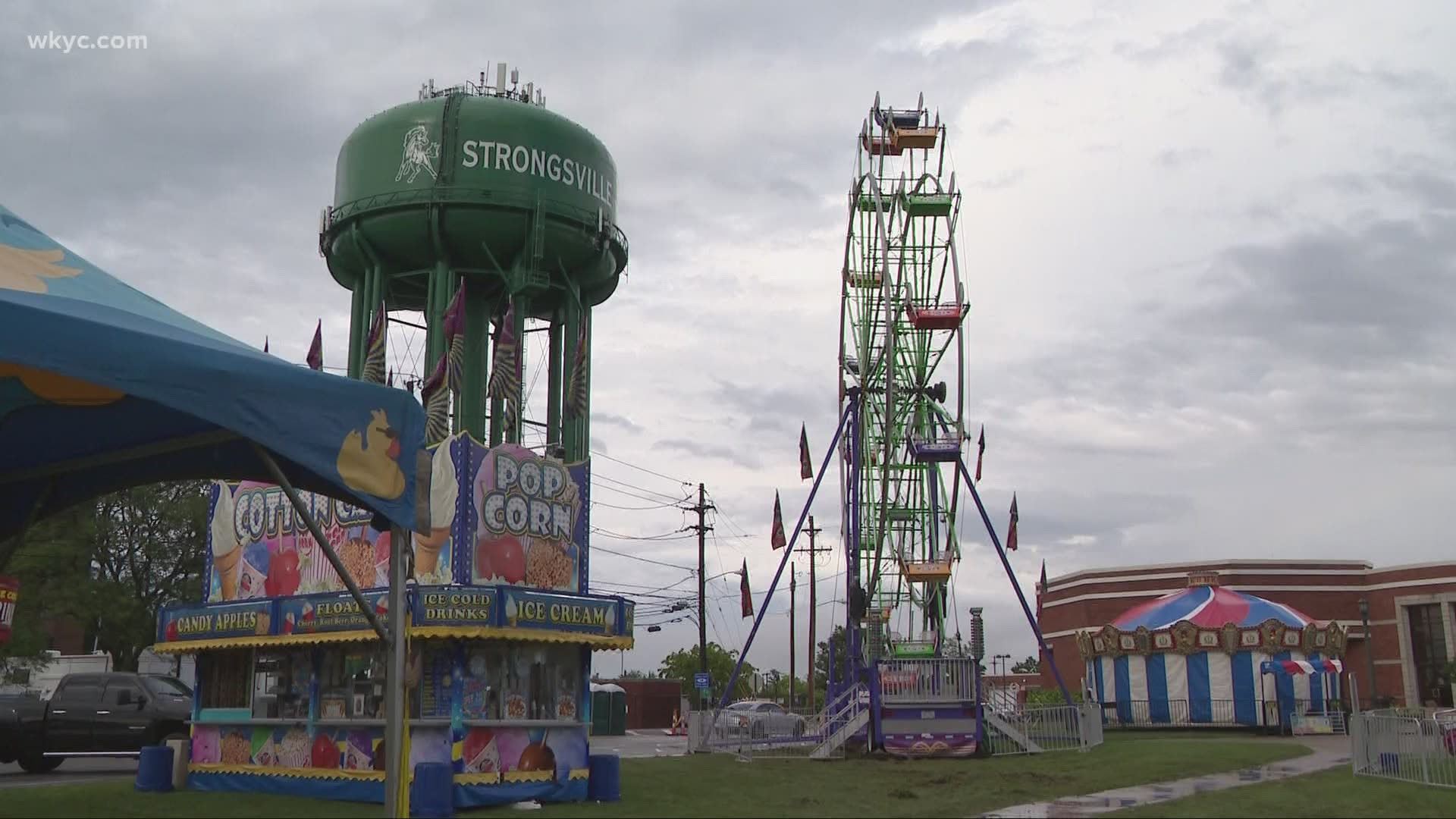STRONGSVILLE, Ohio — Carnival ride safety has become top of mind, following a terrifying ride malfunction in Michigan that was captured on video and widely shared on social media.
Festival goers were horrified on Thursday when a carnival ride at the 95th Annual National Cherry Festival in Traverse City spun out of control, and began tipping back and forth off of the ground. Bystanders rushed to hold the base of the ride, fearing that it might topple over entirely.
As local cities in Ohio are preparing for their own festivals, a new law is being applied for the first time this summer that makes ride safety inspections among the most stringent in the country.
“Tyler’s Law makes rides safer here in the state of Ohio,” said David Miran, Chief of Ride Safety with the Ohio Department of Agriculture, which oversees inspections of amusement rides.
Tyler's Law is named for Tyler Jarrell, who died in 2017 after being thrown from a ride at the Ohio State Fair. The accident was later blamed on excessive corrosion in a steel support beam. The law, which made several improvements to the ride inspection process, was signed by Gov. Mike DeWine on November 6, 2019 and went into effect exactly one year later.
RELATED: Ohio's fair season to include new ride safety standards with implementation of 'Tyler's Law'
Tyler's mother, Amber Duffield, made it her mission to overall ride safety in Ohio.
“The intolerable is losing anyone’s life to something that could possibly be prevented,” she said. "Obviously there was a point of having to set the grief of the loss of no longer sharing a life with Tyler the same…that had to be put on the shelf in order to bring about this change,” Duffield said.
The rules adopt new American Society for Testing and Materials (ASTM) standards. Owners of intermediate rides, towers, and roller coasters are also required to complete the following:
- Ensure all rides meet the manufacturer's minimum requirements for inspection and testing.
Annually perform a complete visual inspection of a ride's structure including removing access panels where possible to do so. Special attention will be given to structural members and their connections for signs of fatigue or corrosion.- If fatigue or corrosion are found, the owner will discuss the findings with the ride's manufacturer and implement mitigation strategies.
- For orphaned amusement rides, the owner must consult a registered professional engineer. If fatigue or corrosion are found, the owner will discuss the findings and implement mitigation strategies as recommended by the registered professional engineer.
- Provide documentation of the visual inspection and the findings to ODA for review.
- Maintain the documentation for the life of the ride and transfer to any subsequent owners.
- Submit a list of all locations and dates where any portable ride was stored for a period longer than 30 days or operated outside the state of Ohio.
The rules also establish the minimum number of times a ride must be inspected each year, as well as the number of inspectors that must perform that inspection.
You can read more about Tyler’s Law here. You can also watch the ODA's Tyler's Law training video below:
Previous Reporting:

